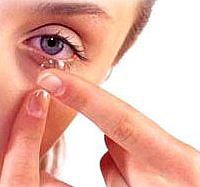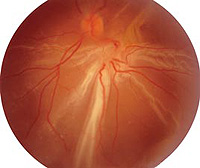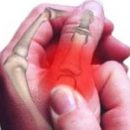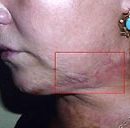Asthenopia or eye fatigue today is one of the most common problems among those who work at a computer.
Content
Work of the visual analyzer
The work of the visual analyzer develops from the activity of light-crossing and glasses.
Asthenopia (visual fatigue) can occur when influencing adverse factors on activity as one and both devices. Much more this applies to the glasses.
The reduction in the operation of the motor apparatus when transferring a view from some items to various remote objects, observing moving objects arises, if the visual work passes in conditions of insufficient illumination, with an inconvenient position and t. D.
Manifestations of visual fatigue
Manifestations of visual, and sometimes general fatigues appear in sensations: when reading or viewing items at close range, small parts start «blur», letters and lines at times «bold», In the eyes there is a thread and brittle pain, pain in the temples, light-friendly appears.
Distinguish accommodative, muscle, neurogenic, symptomatic, mixed and other forms of asthenopia.
Accommodation
Such an important ability of the eye, as an accommodation, still has no one unequivocal explanation. Accommodation - «Device» - It is determined how the ability of the eye clearly see objects located at various distances from it.
The stimulus for accommodation is the fuzziness of the image of the subject on the retina. When fixing a view on a fixed object, the contrast of the image on the retina (perceived as clarity, or sharpness) is constantly changing as a result of the adaptation of the eye.
Accommodative Asthenopia
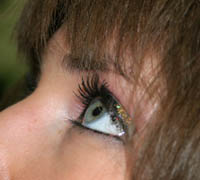 Accommodative Asthenopia (adaptive visual fatigue) is the most widespread form of visual fatigue. It may arise as a result of uncorrected refraction anomalies (hypodies), weakened accommodation as a result of common diseases, acceleration spasm. Since the far-sighted people accommodation is stronger, especially during viewing work at close range, then among far-sighted people, accommodative asthenopia occurs more often. Most of the farsighters, accommodative asthenopia is eliminated by the corresponding correction of long-distance and near view with glasses. If this is not done in time, then as a result, not only asthenopia may occur, but also converging squint.
Accommodative Asthenopia (adaptive visual fatigue) is the most widespread form of visual fatigue. It may arise as a result of uncorrected refraction anomalies (hypodies), weakened accommodation as a result of common diseases, acceleration spasm. Since the far-sighted people accommodation is stronger, especially during viewing work at close range, then among far-sighted people, accommodative asthenopia occurs more often. Most of the farsighters, accommodative asthenopia is eliminated by the corresponding correction of long-distance and near view with glasses. If this is not done in time, then as a result, not only asthenopia may occur, but also converging squint.
Accommodative Asthenopia also arises due to the weakening of the ciliary muscle. The main reasons are the overall overwork, the exhaustion of the body during disease, contusion, nervous overvoltage.
Among the causes of asthenopia, artificial, physiological and pathological spasms of accommodation can be. Artificial accementation spasm caused by the use of drugs - Pilocarpine. The physiological spasm of accommodation is due to the reduction in the ciliated muscle, which can be uniform, for example, with farnicide, and uneven. It takes place after eliminating its cause (definiteness correction). This spasm is not resistant, its characteristic feature is the ability to disappear during sleep when diverting attention. Pathological spasms of accommodation are true (under the lesions of the CNS) and in the form of a resistant stress of accommodation. They can be eliminated only with the help of treatments.
Muscular asthenopia can be caused by overvoltage of muscles. Unpleasant phenomena disappear if you close one eye, t.E. Turn off the convergence (Process of rapprochement, convergence). Can occur with diverging squint.
Mixed asthenopia is usually characterized by manifestations and accommodation and muscular visual fatigue. The reasons for it are the same as each of them. Combined treatment.
Neurogenic asthenopia is more often observed as a manifestation of general neurasthenia and hysteria. Therefore, it can occur when there is no prerequisites for the occurrence of asthenopia.
Symptomatic asthenopia is manifested as a symptom accompanying some inflammatory eye diseases, nose. Her connection with visual work at close range is less obvious.
Treatment of asthenopy and accementary spasms is primarily in correction with glasses. The appointment of optimal optical correction is often sufficient to cure asthenopia. If not sufficiently, adopting treatment and exercise complexes add.



